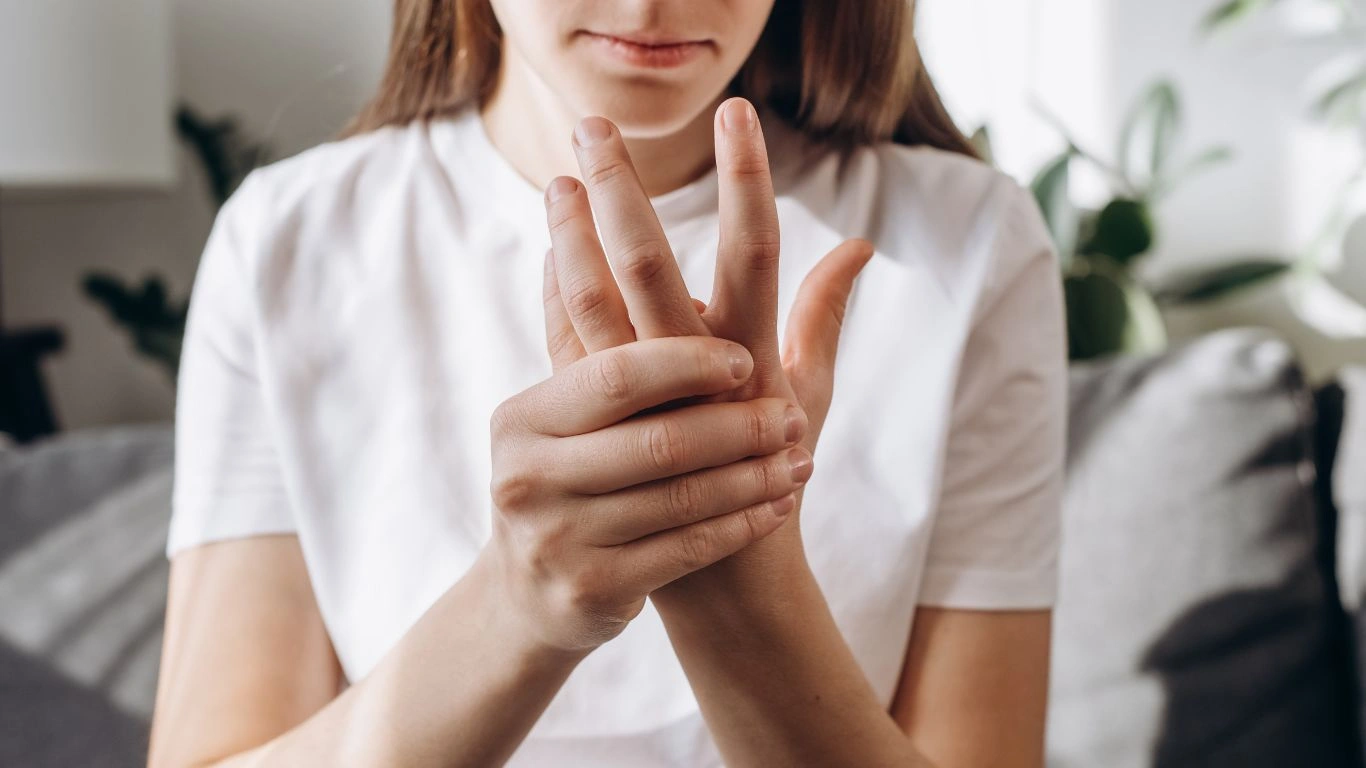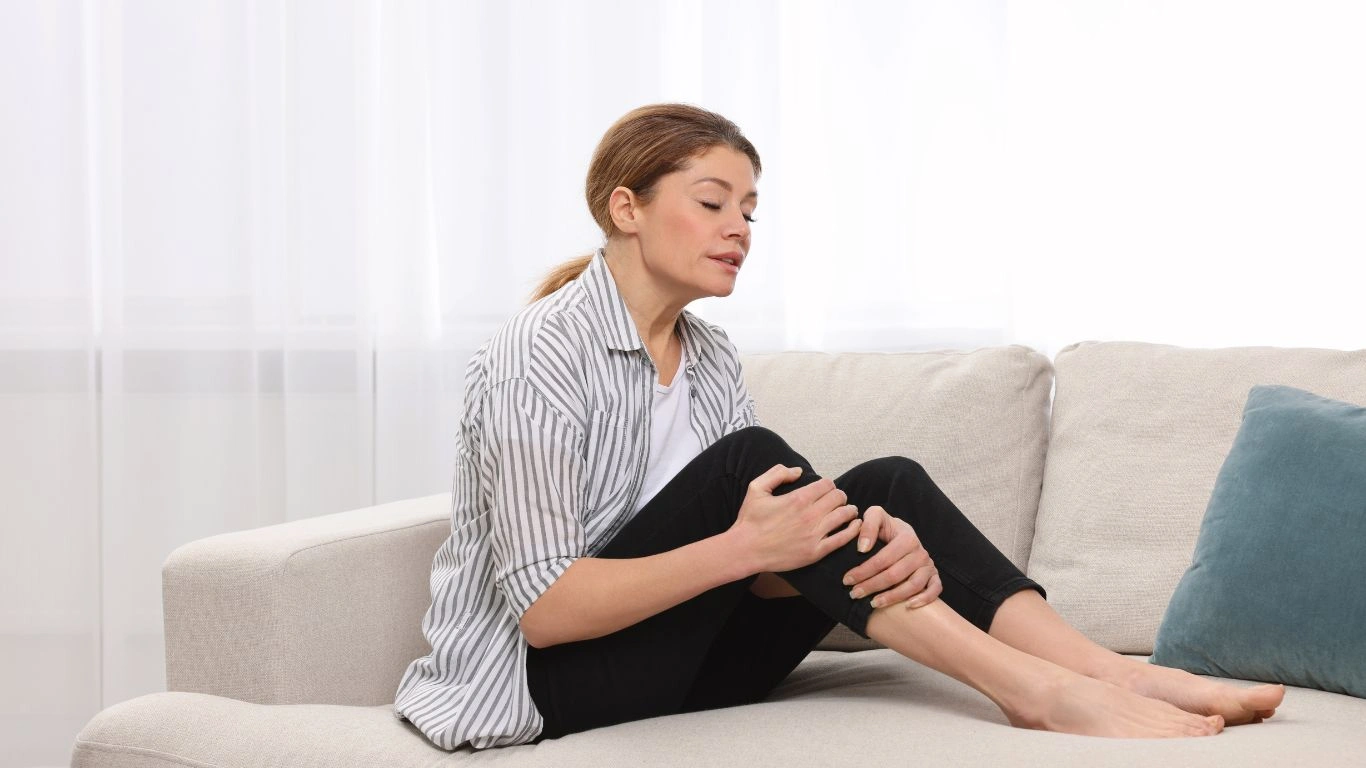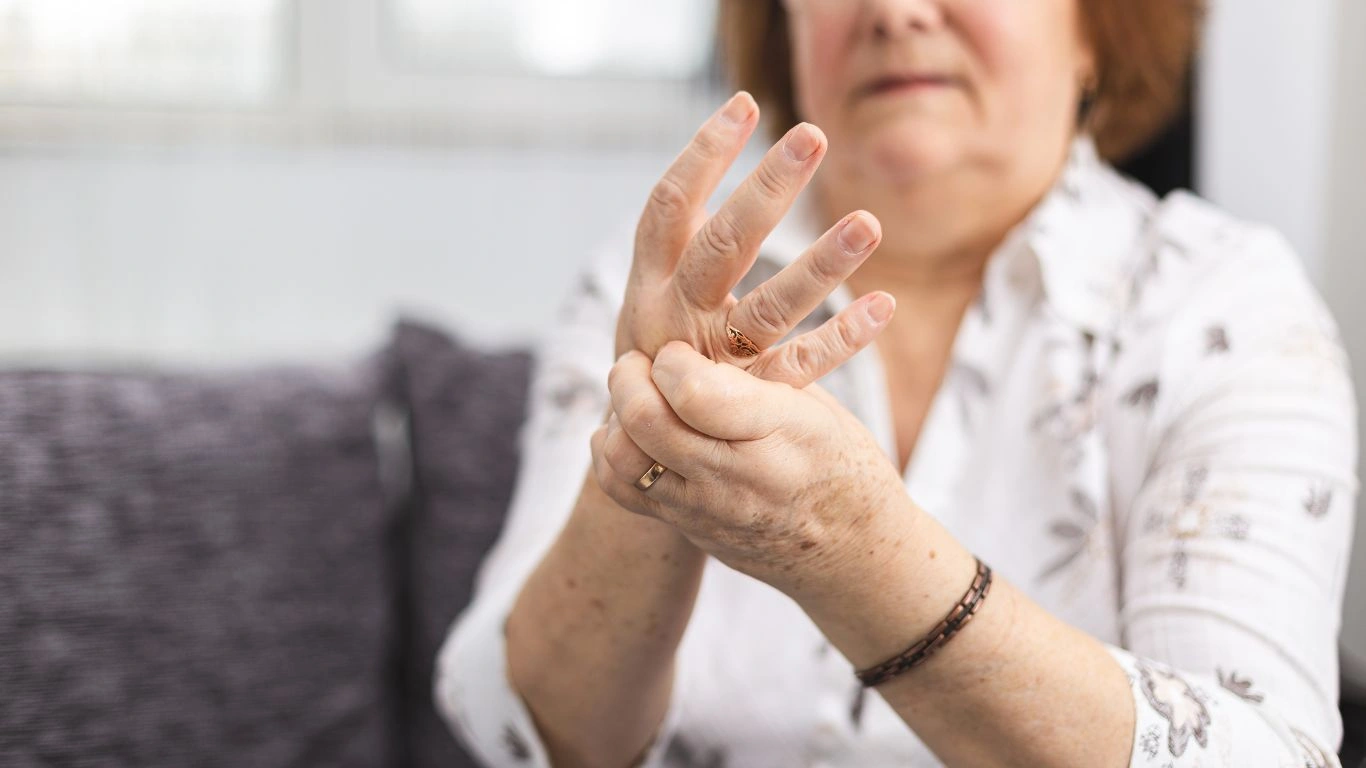Why the Best Bedding for RA Comfort Can Improve Sleep Quality Fast
Let’s be real—when you’re living with rheumatoid arthritis (RA), even something as simple as getting a good night’s sleep can feel like a battle. I’ve had countless conversations in clinic with patients (and have my own nights of tossing and turning) about the impact of pain and stiffness on sleep quality. So let’s dive right into a topic that doesn’t get nearly enough love: the best bedding for RA comfort. Trust me, the right sheets, pillows, and mattresses aren’t just about luxury—they’re about survival on those flare-up nights.
Why Bedding Matters More Than You Think

It’s wild how often bedding gets overlooked when we talk about managing RA symptoms. I mean, we talk meds, exercise, diet—but what about the 6–8 hours you spend lying down each night (if you’re lucky)? Your bed should support you—literally and figuratively.
When joints are inflamed, even minor pressure from stiff sheets or an unsupportive mattress can trigger discomfort. And let’s not even get started on temperature regulation—night sweats, chills, hot flashes? Been there. Bedding that helps soothe pressure points and keeps your body temperature balanced can make a world of difference.
What to Look For in Bedding When You Have RA

1. Mattress That Supports—But Doesn’t Push Back
If I had a dollar for every time someone said, “Firm mattresses are best, right?”—I’d probably have a side hustle in mattress retail. But for RA? Not so fast. A mattress that’s too firm can create extra pressure on already-sensitive joints. And too soft? Your body sinks and your spine says “no thanks.”
- Look for: Medium-firm memory foam or hybrid mattresses with zoned support.
- Avoid: Rock-hard surfaces or super plush pillow-tops that lack support.
- Pro tip from my clinic chair: A mattress with edge support helps you get in and out of bed without extra strain.
2. The Power of a Pillow—Yes, Plural
Don’t underestimate a good pillow lineup. I always recommend keeping a few different types on hand to rotate as needed—especially during flares. Personally, I keep a small body pillow nearby that doubles as a knee prop when my hips act up.
- Neck support: Memory foam or cervical contour pillows work well for neck and shoulder joint pain.
- Knee support: A wedge or body pillow between the knees keeps hips aligned and relieves pressure.
- Hand comfort: Smaller throw pillows can be tucked under wrists or hands to reduce swelling discomfort overnight.
3. Sheets Should Glide, Not Grip
This might seem like a small thing, but trust me—it’s not. When you’ve got morning stiffness and need to shift position, clingy or rough sheets can be the enemy. I once tried this linen set that looked dreamy in the catalog but felt like sandpaper at 2 a.m. Nope.
- Best pick: Bamboo viscose or Tencel sheets. They’re breathable, silky, and naturally temperature-regulating.
- Also great: High-thread-count cotton sateen—soft and easy to move around in.
- Avoid: Cheap polyester blends or stiff percale during flares—they don’t flex with your body.
Temperature Control = Joint Control

RA has a funny way of turning your body into a thermostat with a broken dial. Too hot one minute, shivering the next. Having the right bedding that adapts with you—not against you—can reduce night wakings and help muscles stay relaxed. I always tell my patients: think “smart bedding,” not just soft bedding.
Layering is Key
I recommend using multiple lightweight blankets rather than one heavy one. This lets you adjust quickly if your temp shifts. Personally, I swear by a cooling weighted blanket paired with a breathable quilt—it gives me pressure and comfort without the sweat factor.
- Cooling options: Gel-infused mattress toppers, breathable duvets, and temperature-neutral comforters.
- Heating aids: Electric blankets with auto shut-off, heated mattress pads—but always with a buffer layer to protect joints from direct heat.
Choosing the Right Blanket: Softness Meets Functionality

Let’s talk blankets—because if you’ve ever tried to pull a heavy duvet over sore shoulders, you know it’s not just a cozy-time decision. For folks living with RA (myself included), the blanket you choose should work with your body, not weigh it down or trap uncomfortable heat.
Personally, I keep two blanket options near the foot of my bed: one lightweight throw for warm nights and one plush-but-breathable option for colder evenings. You don’t need a full arsenal, but variety helps you adjust to your body’s mood (because RA sure doesn’t ask permission before changing things up).
- Ideal materials: Fleece, cotton waffle weave, or bamboo blends for breathability and softness.
- What to skip: Weighted blankets that are too heavy, wool that feels itchy, or thick synthetic fabrics that trap heat and sweat.
- Bonus tip: Blankets with quilted stitching or channel fills tend to distribute weight better and avoid pressure spots on tender joints.
The Best Bedding for RA Comfort Starts with the Right Topper

If a new mattress isn’t in the cards right now (they’re not exactly pocket change), a solid mattress topper can totally transform your sleep experience. I’ve recommended this workaround to many of my patients, especially those navigating flare-heavy seasons or post-biologic fatigue.
What to look for in a mattress topper
You’re aiming for something that adds cushioning and minimizes pressure without making you feel like you’re stuck in a marshmallow pit. For me, adding a gel-infused memory foam topper gave just enough support to ease my hip pain without overheating like some older memory foam types tend to do.
- Memory foam toppers: Ideal for cushioning bony areas and absorbing joint shock.
- Latex toppers: Naturally hypoallergenic, a bit bouncier, and great for back support.
- Down alternative: Offers plush softness but may compress over time—better for light cushioning.
Make sure to pick one with a removable, washable cover—trust me, joint flares are messy, and being able to clean things easily is a huge win.
Let’s Talk Adjustable Beds

This might sound like a big leap—but if you’re dealing with consistent RA pain and fatigue, an adjustable base can be a total game changer. I’ve had patients (and one very wise auntie) swear by them. Elevating the legs to reduce swelling, slightly lifting the upper body to relieve back or shoulder tension—it’s all possible with the press of a button. It honestly makes those 3 a.m. flareups a bit less brutal.
Adjustability Benefits for RA
- Reduces joint stress: Especially helpful for knees, hips, and lower back.
- Improves circulation: Keeping the legs slightly elevated reduces morning stiffness and swelling.
- Customizable positions: Lets you shift without the whole bed moving and waking your partner (or your pet).
One of my favorite features? The zero-gravity setting. It puts your body in a balanced, pressure-free position that mimics weightlessness. Sounds fancy, but I’m telling you—it feels amazing on rough nights. Just make sure your mattress is compatible with the base you choose.
Small Touches, Big Impact: Accessories That Matter
Sometimes it’s not just the “big” pieces that count—it’s the little additions that make your sleep space more RA-friendly. These tweaks don’t cost much but can really improve your comfort when flares hit or fatigue rolls in uninvited.
- Silk or satin pillowcases: Reduce friction on your skin and joints when turning your head.
- Bedside grab handles: A discreet but super useful add-on for mornings when joint stiffness is at its worst.
- Under-bed storage for heating pads, braces, or topical creams: Keep essentials within easy reach without getting up and down repeatedly.
Personally, I keep a soft LED nightlight on my nightstand—it’s just enough light to guide me if I need to reposition or take a middle-of-the-night medication without overstimulating my senses. (Let’s be honest, bright lights at 2 a.m. should be illegal.)
Practical Advice from My Rheumatology Chair
After years in practice and navigating my own joint challenges, I can tell you this—the best bedding for RA comfort doesn’t have to be complicated or expensive. It just has to meet your needs, respect your body, and adapt with you.
Comfort looks different for everyone. Some of my patients sleep best curled up like a pretzel with three pillows and a heating pad. Others need a cool, flat surface with zero distractions. There’s no one-size-fits-all—so listen to your body and don’t be afraid to try new setups. And if something doesn’t work? Scrap it. Your comfort is worth the trial-and-error.
Creating a Bedtime Routine That Supports RA Comfort

Now that we’ve got the bedding essentials covered, let’s talk about something equally important but often overlooked—a solid bedtime routine. I know, routines can sound boring. But hear me out: when you’re living with RA, the wind-down process can be just as crucial as what you’re sleeping on.
In my own life, I’ve learned that carving out 30–45 minutes before bed to unwind and listen to my body helps me fall asleep faster and stay asleep longer—even on flare nights. This doesn’t have to be complicated or rigid. Think of it more like sending your body a gentle signal that it’s safe to rest.
My personal bedtime wind-down checklist:
- Gentle stretching or light yoga to loosen up stiff joints
- Warm (not hot) shower or bath with Epsom salts
- A cup of chamomile or turmeric tea (bonus: anti-inflammatory)
- Turning on my heated mattress pad for a few minutes before getting in
- Guided meditation or deep breathing with the lights low
Everyone’s version will be different. I’ve had patients who love journaling before bed or using aromatherapy diffusers with lavender. The goal isn’t perfection—it’s consistency and self-care. And yes, sometimes that includes reading a cheesy novel under your best bedding for RA comfort.
How to Maintain Your Bedding for Long-Term Comfort

So you’ve invested in supportive bedding—awesome. But keeping that bedding clean, fresh, and functional? That’s the next step in creating a cozy, RA-friendly sleep sanctuary. Maintenance doesn’t have to be a hassle, but a few good habits can go a long way in preserving comfort.
Keep it simple, but consistent:
- Wash sheets weekly: Use gentle detergents free of harsh fragrances and opt for warm—not hot—water to avoid wearing down soft fabrics.
- Fluff pillows regularly: Especially those used for joint support. I keep a reminder in my calendar to rotate and air mine out every couple of weeks.
- Mattress toppers and protectors: Clean every 1–2 months. Many come with removable covers—huge bonus for RA days when spills or meds create extra mess.
- Replace when needed: Don’t hold onto bedding that’s lost its structure. I had a body pillow I loved for years—but when it started sagging, it actually made my hip pain worse. Sometimes it’s time to let go and upgrade.
Tips for Shopping Smart and RA-Friendly
Let’s face it—some bedding options cost a small fortune. But comfort shouldn’t be a luxury only available to a few. Whether you’re shopping online or in-store, here are a few tips I’ve shared with patients (and used myself) to make smarter, more affordable choices.
- Look for return policies: Brands like Saatva, Purple, and Tempur-Pedic offer sleep trials on mattresses and toppers.
- Read real reviews: Focus on ones written by people with chronic pain, joint issues, or autoimmune disorders—those are your people.
- Use HSA/FSA funds: Some bedding, especially ergonomic pillows and supports, may qualify for reimbursement—check with your plan.
- Don’t forget seasonal sales: I snagged my last bamboo sheet set for 40% off during a Memorial Day sale. Sign up for email alerts from your favorite bedding brands—it’s worth it.
When to Ask for Help (And Why It’s Okay)
This part’s important—because RA is sneaky, and there’s no shame in asking for help when you need it. Changing sheets or flipping a mattress can feel like climbing Everest on a flare day. I’ve had to ask for backup more than once, and I always remind patients: delegating is self-care.
If your pain or fatigue makes bedding upkeep too much, talk to a loved one or even consider occasional help from a house cleaner or caregiver. It doesn’t make you weak—it makes you smart. You’ve got bigger things to focus on, like managing your health and getting restorative rest.
References
Disclaimer
This article is intended for informational purposes only and is based on both professional clinical experience and personal insights. It does not replace professional medical advice, diagnosis, or treatment. Always consult your rheumatologist or healthcare provider before making changes to your bedding setup or treatment plan related to rheumatoid arthritis.

Tarra Nugroho is a dedicated Nurse Practitioner with a strong foundation in family and preventive care. She brings both compassion and clinical expertise to her practice, focusing on patient-centered care and health education. As a contributor to Healthusias.com, Tarra translates medical knowledge into clear, empowering articles on topics like women’s health, chronic disease management, and lifestyle medicine. Her mission is simple: help people feel seen, heard, and informed—both in the clinic and through the content she creates. When she’s not caring for patients, Tarra enjoys weekend hikes, plant-based cooking, and curling up with a good health podcast.





